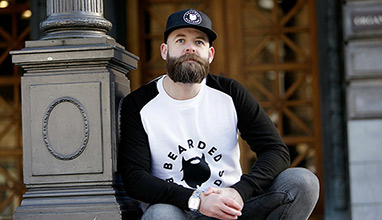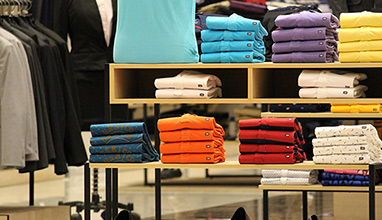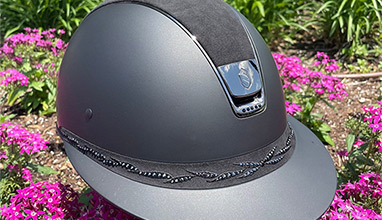8 Tips for Young Men to Dress for the Job Without Breaking the Bank
According to Princeton psychologist Alexander Todorov, people form first impressions in a mere fraction of a second. For Gen Z professionals entering the workforce, that means that what you wear sends a message before you say a single word. Fortunately, dressing professionally doesn’t require draining your bank account or sacrificing your personal style. Business casual has evolved beyond stiff, uncomfortable attire, and today’s professional wardrobe can actually reflect who you are while still showing you mean business. These tips will help you build a smart, affordable wardrobe that works for interviews, networking events, your first day at the office, and everything in between.

Prostock-studio/Shutterstock.com
Tip #1: You Don’t Need a Designer Suit; You Need a Great Fit
Stop scrolling through luxury brand websites and focus on what actually makes clothes look expensive: a proper fit. A $150 suit that fits perfectly will always look better than a $800 designer piece that bunches at the shoulders or pools around your ankles.
Slim-fit suits work well for leaner builds and create a modern silhouette, while classic fits provide more room and comfort for broader builds. Whichever you choose, even affordable pieces look better with minor adjustments. Taking in the waist of trousers, hemming pants to the right length, or adjusting sleeve length makes an “okay” suit look incredible. Many stores offer reasonably priced alterations, and the investment pays off every time you wear the piece.
Tip #2: Invest in One Go-To Business Casual Look
Building an entire professional wardrobe overnight isn’t realistic for most people just starting their careers. Instead, it makes more sense to invest in one go-to business casual look. You can’t go wrong with well-fitted chinos in navy, gray, or khaki paired with a quality button-up shirt and versatile shoes.
Building out your wardrobe becomes much simpler once you’ve created a base look. Add a second pair of chinos in a different color, or pick up another shirt that works with both pairs of pants. Suddenly, you’ve created multiple outfits from a few core pieces.
The beauty of modern business casual outfits is their flexibility. Dress them up with a blazer for more formal meetings or keep them relaxed for creative workplaces. When you build around a core look, every new purchase serves multiple purposes.
Tip #3: Prioritize Versatile Dress Shirts
Men’s dress shirts form the backbone of countless outfits and can be worn solo or layered under sweaters, blazers, or jackets. Start with one or two shirts in white or light blue. These colors work with everything and never go out of style.
When shopping for dress shirts, pay attention to collar style and fabric. A classic spread collar works for most situations and accommodates ties and open-collar looks. When it comes to fabric, cotton or cotton-blend options breathe better than synthetic materials and generally look more expensive.
Tip #4: Master the Art of Ties (Without Looking Too Formal)

Daxiao Productions/Shutterstock.com
Ties might seem intimidating, but they’re simpler than they appear. The secret is choosing the right style for your age and the environment you’re dressing for. Skinny ties create a contemporary look with slim-fit shirts, while knit ties offer texture and a relaxed vibe. Regardless of your age, classic silk ties are the safest choice for conservative environments or important interviews where you can’t risk looking too casual. Learning how to tie a tie is a skill worth developing early in your career. Don’t stress about having a dozen different knots memorized. Mastering one or two techniques will serve you well for years.
Tip #5: Understand Modern Business Casual vs. Old-School Corporate
Old-school corporate attire meant full suits, conservative colors, and strict adherence to formal dress codes. However, modern business casual allows for significantly more flexibility and personal expression. Today’s professional environments often welcome smart layered looks, like a lightweight blazer over a quality polo shirt or chinos with a sweater and collared shirt underneath.
Your work attire should be clean and well-fitted, but it may not need to be formal in the traditional sense. When in doubt about the dress code, dress slightly more formally than necessary. You can always dial it back once you understand the norms.
Tip #6: Grooming & Shoes Matter, Too
Scuffed shoes or an unkempt beard send the message that you don’t pay attention to details - and details matter in professional settings. Clean and polish leather dress shoes regularly, and if you’re wearing sneakers, make sure they’re clean and in good condition. Having one pair of versatile shoes in good condition beats owning five worn-out pairs.
You don’t need an elaborate grooming routine, but basic maintenance goes a long way. Style your hair neatly, maintain your facial hair, and keep your fingernails clean and neatly trimmed. These details cost almost nothing but contribute significantly to your overall look.
Tip #7: Shop the Off-Season & Know When to Buy
Smart shopping habits stretch your budget further than you might expect. One of the most effective strategies is buying professional clothing when retailers are clearing inventory to make room for new collections. End-of-season sales often decrease prices by 30-50%, making high-quality staple pieces more affordable. Late summer and early fall bring significant markdowns on lightweight dress shirts and lighter-colored slacks. Similarly, late winter and early spring see deep discounts on heavier items like wool trousers and sweaters.
Tip #8: Don’t Sleep on Accessories

Ilya.K/Shutterstock.com
Accessories add the final polish without requiring major investment. A clean leather belt that matches your shoes creates visual cohesion, and a classic watch suggests you value time and professionalism. If you carry a bag, a structured messenger bag is a great option. These small touches show that you take your professional appearance seriously.
Confidence is the Best Fit You Can Wear
Dressing professionally doesn’t mean sacrificing your personality or spending money you don’t have. It means understanding what works for your body type, industry, and budget, then building a wardrobe that makes you feel confident.
No matter what, the most important thing you can wear is confidence. When you know you look professional, you walk into rooms differently and feel more comfortable introducing yourself to senior leaders or potential mentors. That confidence doesn’t come from the price tag on your clothes. It comes from presenting yourself well and showing respect for the opportunity in front of you.
Hits: 2401 | Leave a comment
Tags:menswear, style tips

















